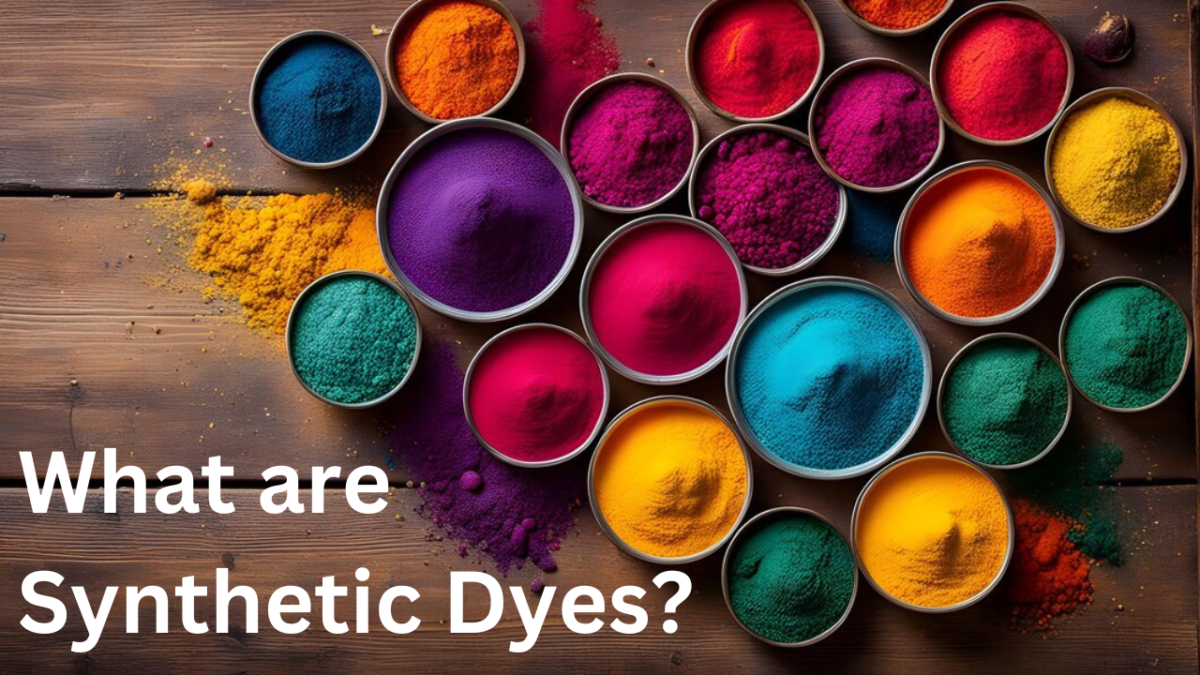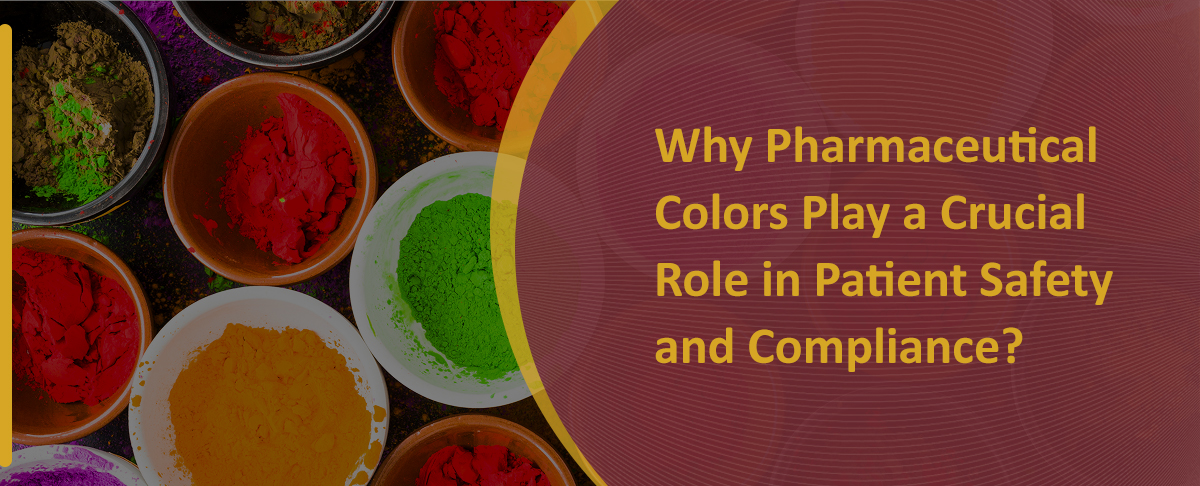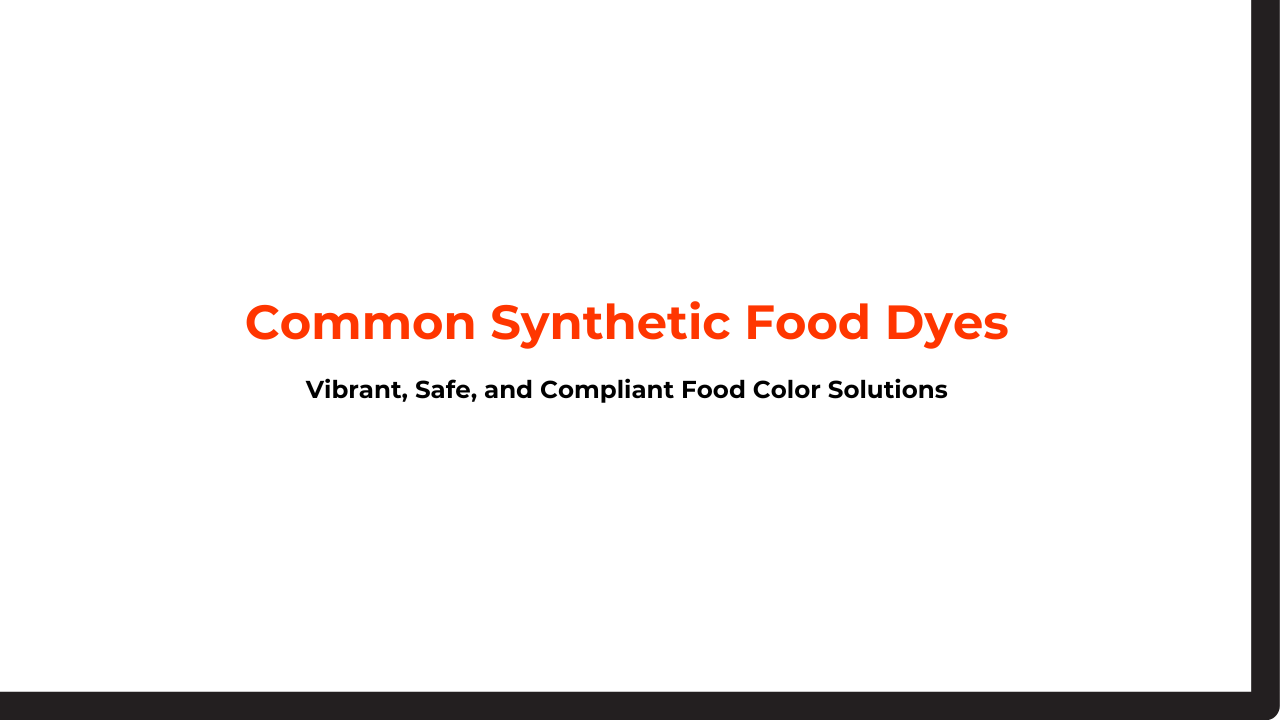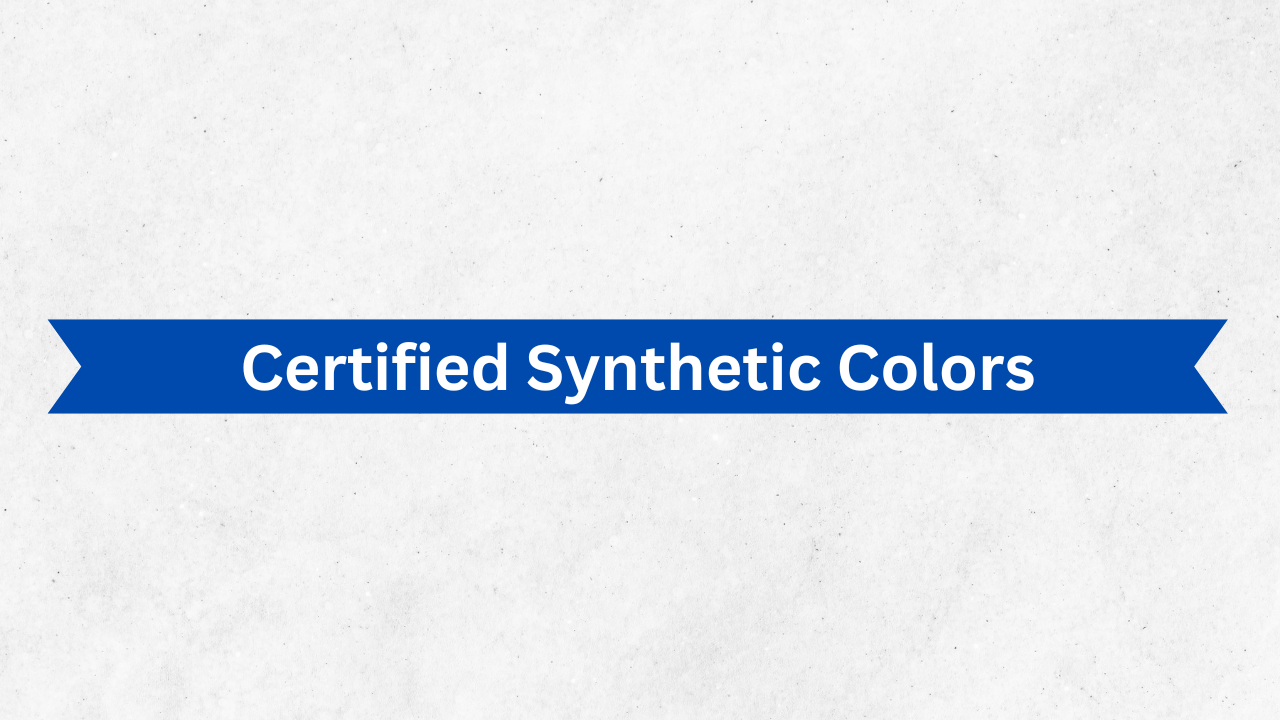Synthetic dyes are chemical compounds derived from coal tar or petroleum-based chemicals in a well-designed laboratory. Synthetic dyes and chemicals are rapidly increasing due to their powerful capabilities to produce more vibrant, bright colors, making the product more appealing, attractive, and pleasing to consumers. In this blog, we will talk about synthetic dyes and explore their various applications in different industries.
Synthetic dyes are used for food coloring due to their several advantages and chemical properties, which enhance the overall look and feel of food items. They are also widely used in various industrial applications, including drugs, cosmetics, textiles, plastics, and more, to enhance the visual appearance of products.
Synthetic dyes are popular worldwide due to their cost-effectiveness, ease of use, wide range of color variables, durability, and greater shelf life value. Artificial dyes are certified and tested under a rigorous testing process set by the U.S. FDA and EFSA to ensure the safety and proper use in various applications.
If you’re wondering about synthetic dyes and their advantages and disadvantages, continue reading this blog.
Understanding Dyes
What are dyes? How are dyes obtained? You often think about that when it comes to dye. Dyes are chemical substances that impart color to materials like plastics, textiles, and paper. Pigments can change the appearance of materials with their color-changing properties, such as changing their color, blackness, whiteness, or fluorescent intensity, depending on how they absorb or scatter light.
The main difference between dyes and pigments is that they are not chemically bonded to the material they color. To achieve better dye fastness, dyes are generally applied in aqueous solutions, with a mordant applied if necessary. There are two main types of dyes: natural dyes and synthetic dyes. Each has its different properties and areas of application.
There has been an ongoing debate between natural and synthetic food colors based on their properties, solubility, cost factor, and pros and cons. Most natural dyes are derived from natural sources, such as plants, trees, vegetables, beetroots, leaves, fungi, bark, lichens, berries, and minerals.
The use of natural dyes is limited due to limited resources and properties. However, their potential health benefits make them essential. In today’s fast-paced world, synthetic dyes made from petrochemicals are most common due to long-term demand and technological advancements.
Synthetic dyes are derived from coal tar and petroleum-based chemicals. These dyes are best known for their cost-effective price, resilience (fastness, mordancy), optical properties (color), and resilience. Both dyes and pigments are colored as they absorb some wavelengths of visible light.
Dyes can be soluble in some solvents, while pigments are not soluble in some solvents. When salt is added to dye, it becomes insoluble, resulting in an insoluble pigment called a lake pigment.
What are Synthetic Dyes?
Synthetic dyes are a broad group of chemical components and ingredients synthetically derived from coal-tar and petroleum-based chemicals & are mainly used to impart vibrant, stable, and bright colors to foods, drugs, cosmetics, etc.
These dyes are most commonly used in food, drugs, and cosmetics to make products more appealing to consumers. Synthetic dyes used in home and personal care products are certified and tested rigorously to ensure medication safety and proper use.
In addition, synthetic dyes are cost-effective, durable, and stable, producing a wide range of vibrant colors with different hues and shades.
Read More: Top Synthetic Dyes and Their Uses.
Advantages of Synthetic Dyes
One of the most significant advantages of synthetic dyes is that they provide more consistent, vibrant, and reliable color results than natural dyes.
- They can produce colors of their choice, likes, and preferences.
- These dyes are cost-effective, making them more suitable for mass production than natural dyes.
- They offer greater durability and stability than natural dyes and don’t fade away in washing and harsh environmental conditions.
- They are much easier to produce in large quantities, which makes them more available and accessible than natural dyes.
- They don’t require any use of a mordant.
Disadvantages of Synthetic Dyes
- Synthetic dyes are chemically derived from petroleum-based chemicals, which can be absorbed into the skin and body.
- When not used correctly or as labeled, these dyes can cause health issues, including behavioral problems, skin allergies, and respiratory diseases.
- The use of petroleum-based dyes increases the difficulty of treating dyeing wastewater.
Application of Synthetic Dyes
Synthetic dyes are widely used for a variety of applications, including but not limited to:
- Food
Synthetic dyes provide colors to food products, such as baked goods, candies, ice cream, confectionery items, cold drinks, and beverages in the food industry. These dyes are added to make the food more appealing and attractive.
- Pharmaceuticals
Synthetic dyes are widely used in the pharmaceutical industry to color tablets, capsules, syrups, and various dosage forms. The main goals of adding synthetic dyes are to enhance the appearance of pharmaceutical products, improve their palatable value, and reduce drug counterfeiting.
- Cosmetics
Synthetic dyes are widely used in cosmetics to color various products, including nail polish, eye shadows, and lipsticks. These dyes make products more appealing and attractive to consumers.
- Textiles
Synthetic dyes are widely used to color fabrics, including silk, cotton, wool, and numerous synthetic fibers such as nylon, polyester, and acrylic.
- Plastics
Dyeing plastic products like toys, containers, and consumer electronics with these dyes adds color and improves their aesthetic appeal.
- Printing
Synthetic dyes are widely used in the printing industry to produce magazines, newspapers, books, and packaging.
Types of Synthetic Dyes
There are various synthetic dyes, each of which has pros, cons, and applications. The following are the most common types of synthetic dyes:
- Fluorescent dyes
- Disperse dyes
- Mordant dyes
- Solvent dyes
- Oxidation dyes
- Azo dyes
- Azoic dyes
- Phthalocyanine dyes
- Anthraquinone dyes
- Triarylmethane dyes
- Reactive dyes
- Metal complex dyes
- Naphthol dyes
- Direct dyes
- Vat dyes
- Acid dyes
- Basic dyes
- Sulfur dyes
- Nitro dyes
Classification of Synthetic Dyes
Synthetic dyes are classified in the top 7 ways based on various criteria, including the dyeing process, chemical structure, and application. The following are classifications of synthetic dyes, which are included but not limited to:
- Colorfastness
Seeing the colorfastness properties, synthetic dyes can be classified based on heat stability, washfastness, and lightfastness.
- Application
These dyes are further classified based on application, including food dyes, pharmaceutical dyes, cosmetic dyes, textile dyes, leather dyes, plastic dyes, inkjet dyes, and paper dyes.
- Dyeing process
They are further classified based on the dyeing process used, including acid dyes, reactive dyes, direct dyes, vat dyes, and dispersed dyes.
- Chemical structure
Synthetic dyes are classified depending on their chemical structure, including azo dyes, indigo dyes, anthraquinone dyes, and phthalocyanine dyes.
- Toxicity
Depending on the toxicity level, synthetic dyes are classified as low-toxicity dyes, high-toxicity dyes, and eco-friendly dyes.
Conclusion
Synthetic dyes are widely used for various applications in different industry verticals, from food, drugs, and cosmetics to plastics and textiles. They are the most preferred colors or colorants that make your products visually appealing and attractive to consumers and add significant value to your product.
If you are a business or individual professional needing high-quality synthetic dyes and pigments for your industrial applications, look no further than Crest Infosystems.
We are reputed manufacturers and exporters of premium-quality synthetic dyes and pigments, as well as various colorants, such as food, cosmetic, and pharmaceutical colors. Contact us today for more information on the wide range of artificial dyes or pigments we produce at our state-of-the-art manufacturing facilities.




